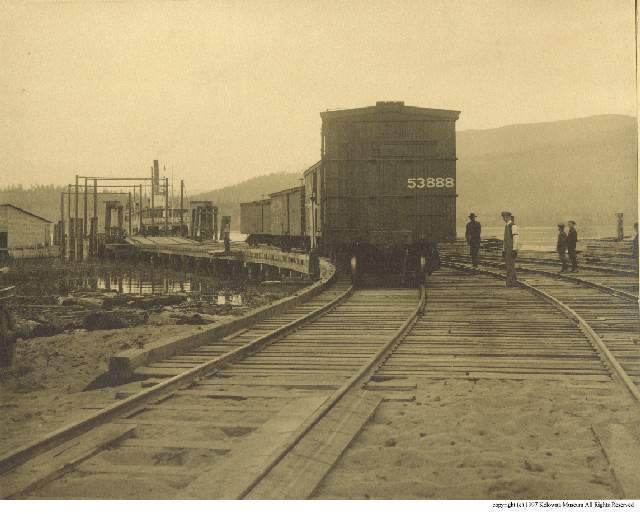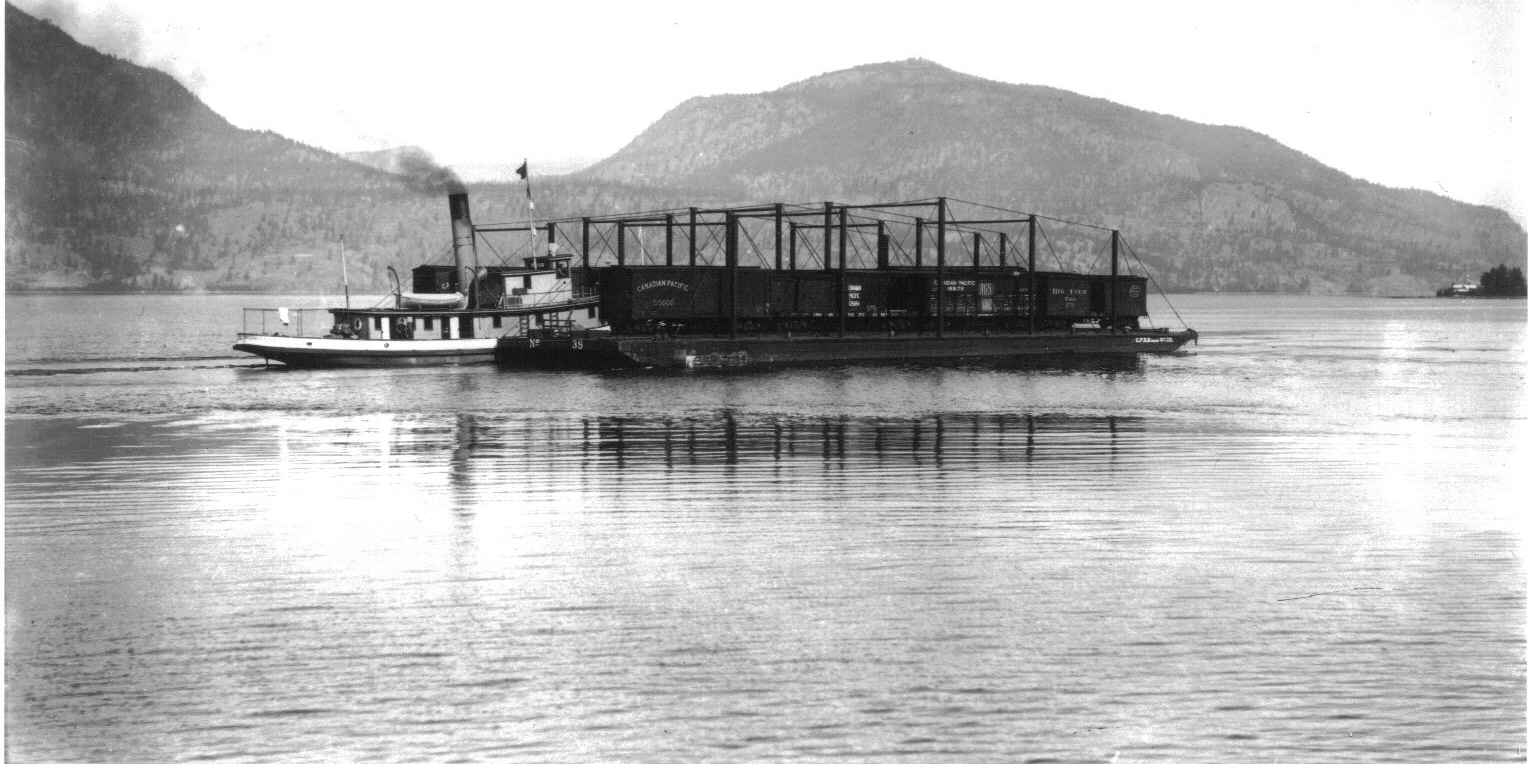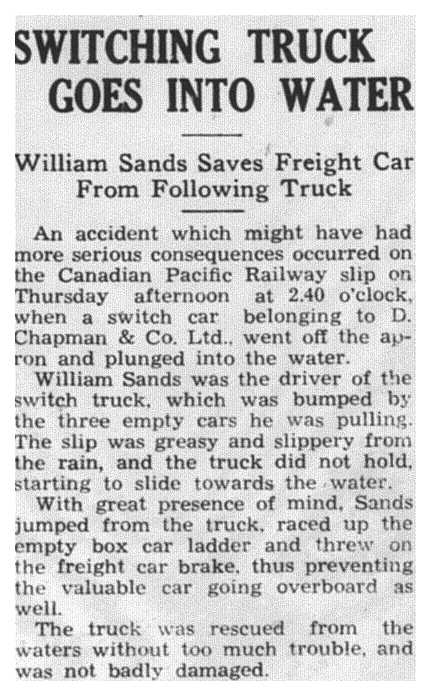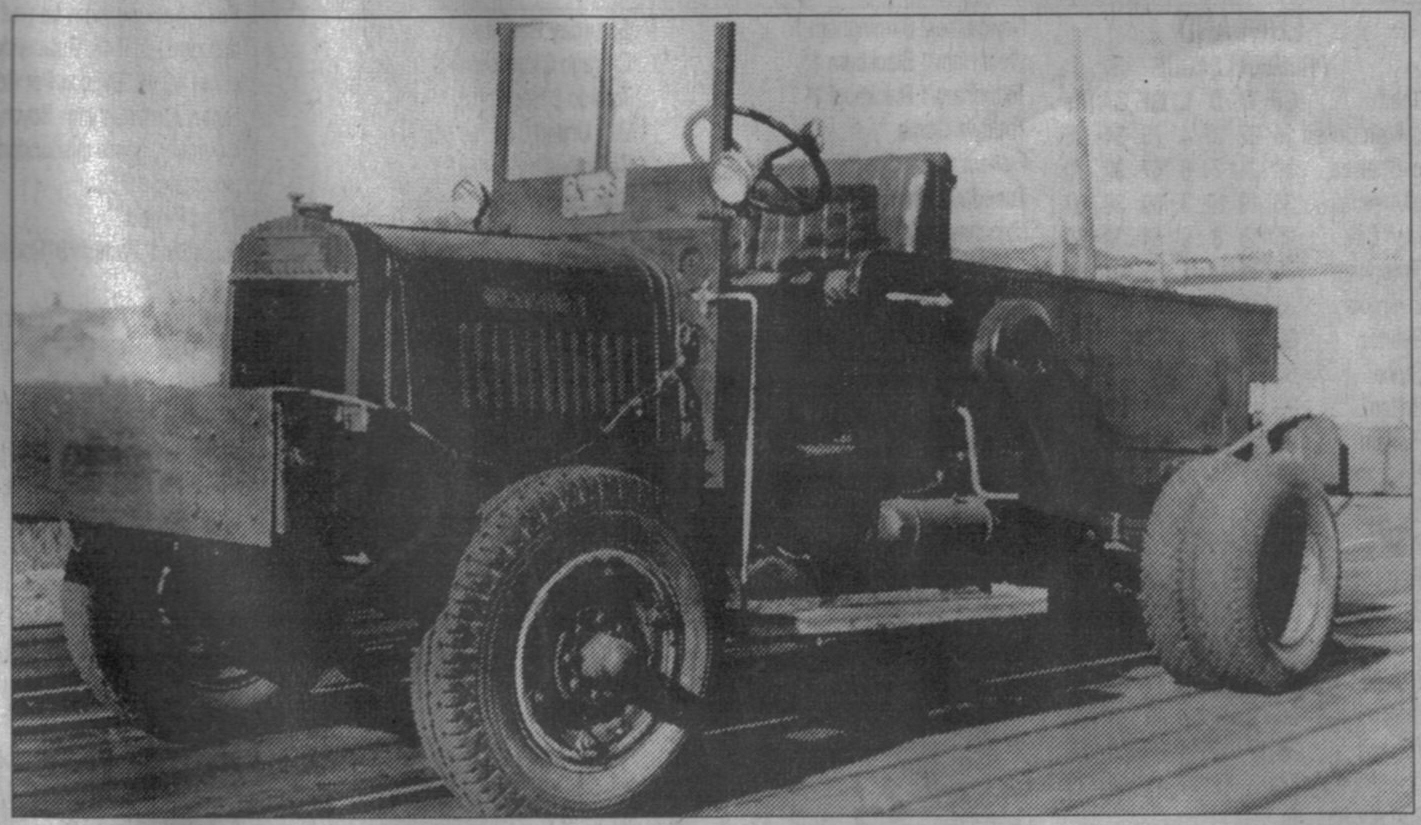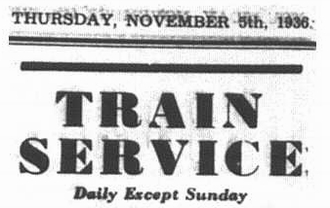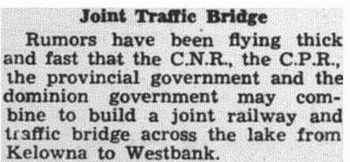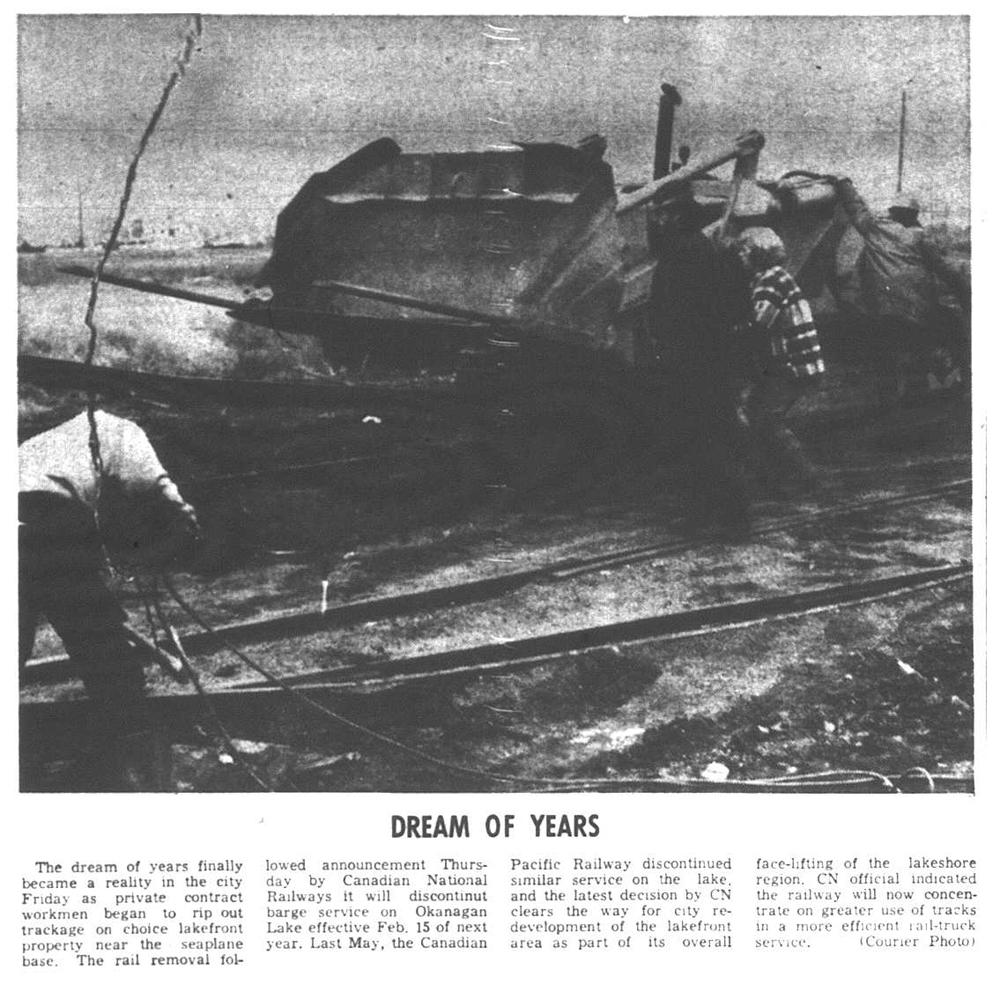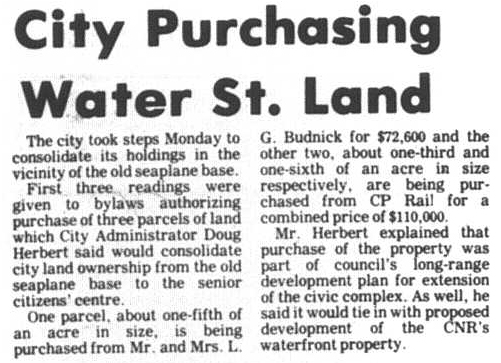Beginning of a Mainline
Soon after completion of the Canadian Pacific mainline on May 12th, 1893, a 46-mile line was run from Sicamous-south to Vernon then 5 miles west to Okanagan Landing. With various stops along the way, the sternwheelers made the trip south from Okanagan Landing onto Kelowna and Penticton.
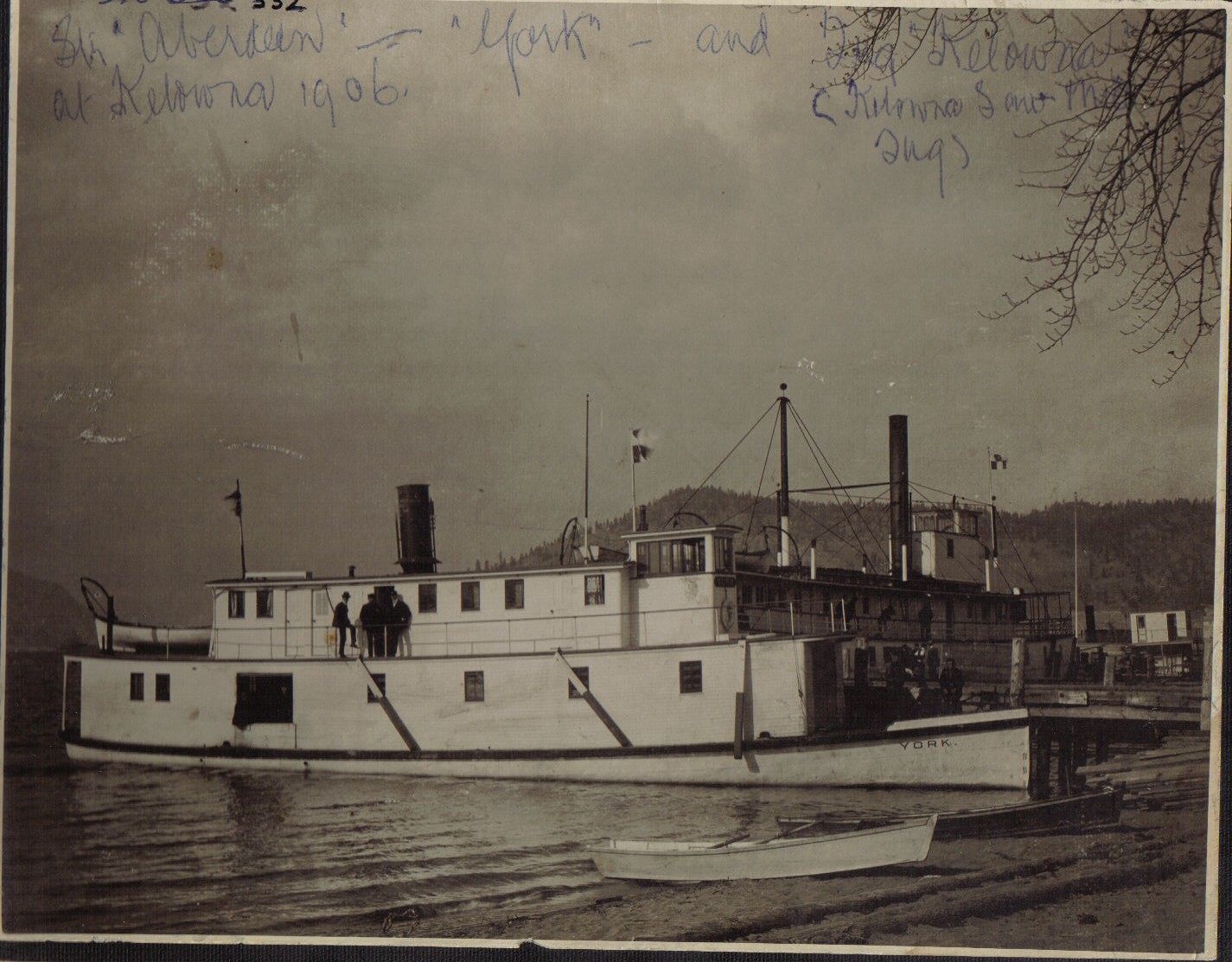
Sternwheelers, Tugs and Barges continued onto Penticton, at the south end of Okanagan Lake, and in 1915, connected with the Kettle Valley Railway. For more about tug/rail barge activity around Kelowna, view page 6.
October 22nd, 1909—The new Canadian Pacific rail wharf received its first train cars.
A new industrial area of Kelowna, which was north of where the sternwheeler wharf was located, started to built up quickly around this isolated railyard, as it appeared in 1914.
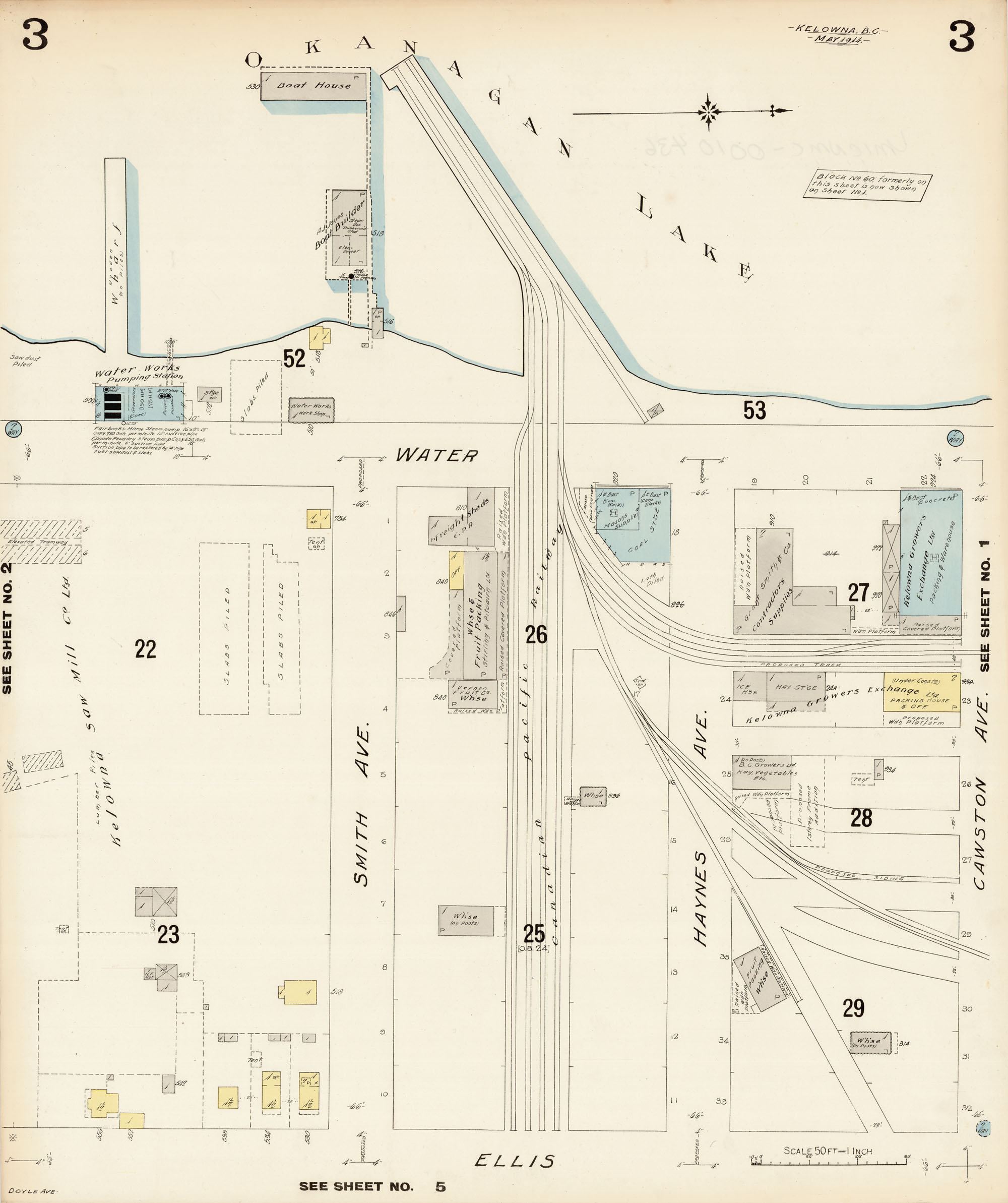
Teams of horses would move the train cars from the wharf to the packing houses and coal dealers. Years later, the horse teams were replaced by shunter trucks. A locomotive was not used from the wharf and track between the buildings because of soft ground, sharp curves and the need to run around train cars to push or pull when switching. An article from the January 1952 Kelowna Daily Courier, describing this operation. This truck was supplied by Chapman Transport.
A replacement truck used for this job was a 1945 six-cylinder International, with spring-loaded bumpers. Rear wheels were weighted with concrete.

Taken on Water Street. Wharf is behind the truck. William Haug Building Supply was on the other side of Water St. just in front of the truck.
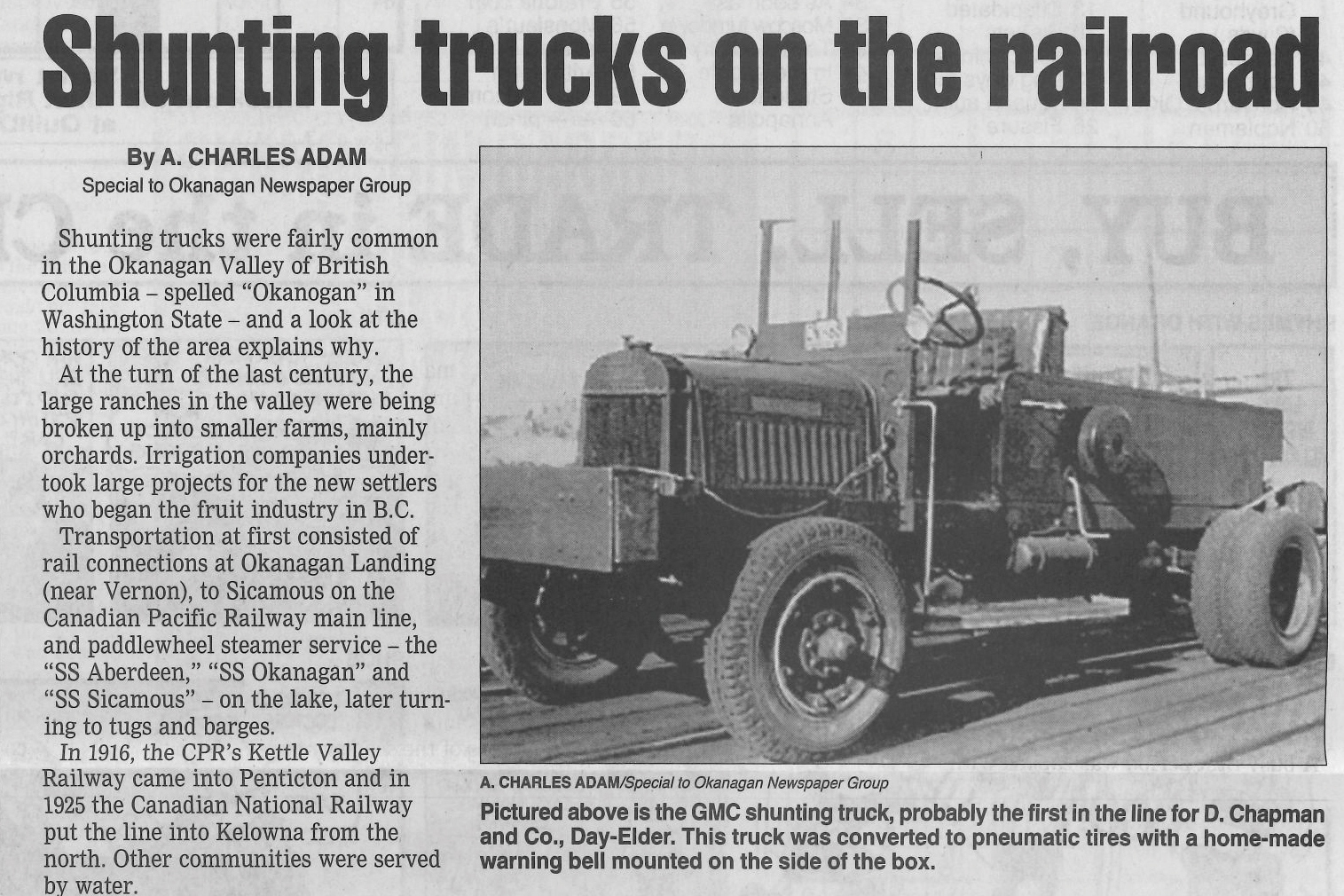
An interesting article by longtime Kelowna resident Charles Adam for the Okanagan Historical Society. His article has a very detailed description of the operation and trucks through the years.
One of Kelowna’s early residents, William Haug arrived here on April 13th, 1892. Before the new rail wharf was built, Haug received train car loads of materials for his building supply and brick manufacturing business. Train cars would be unloaded at Okanagan Landing and delivered to Kelowna on the decks of the S.S. Aberdeen, S.S. York and later, S.S. Okanagan.
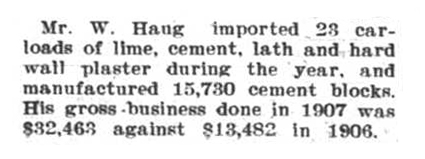
Haug Business Report, 1908
William Haug built his new store in the newly developed industrial railyard area of Kelowna, opening up a building supply/coal dealer in 1910. Located across Water St. from the rail wharf and stock pen. Exact location is shown on the track plan below. This gallery will show many more pictures of this interesting area from the late 1920’s to early 1930’s.
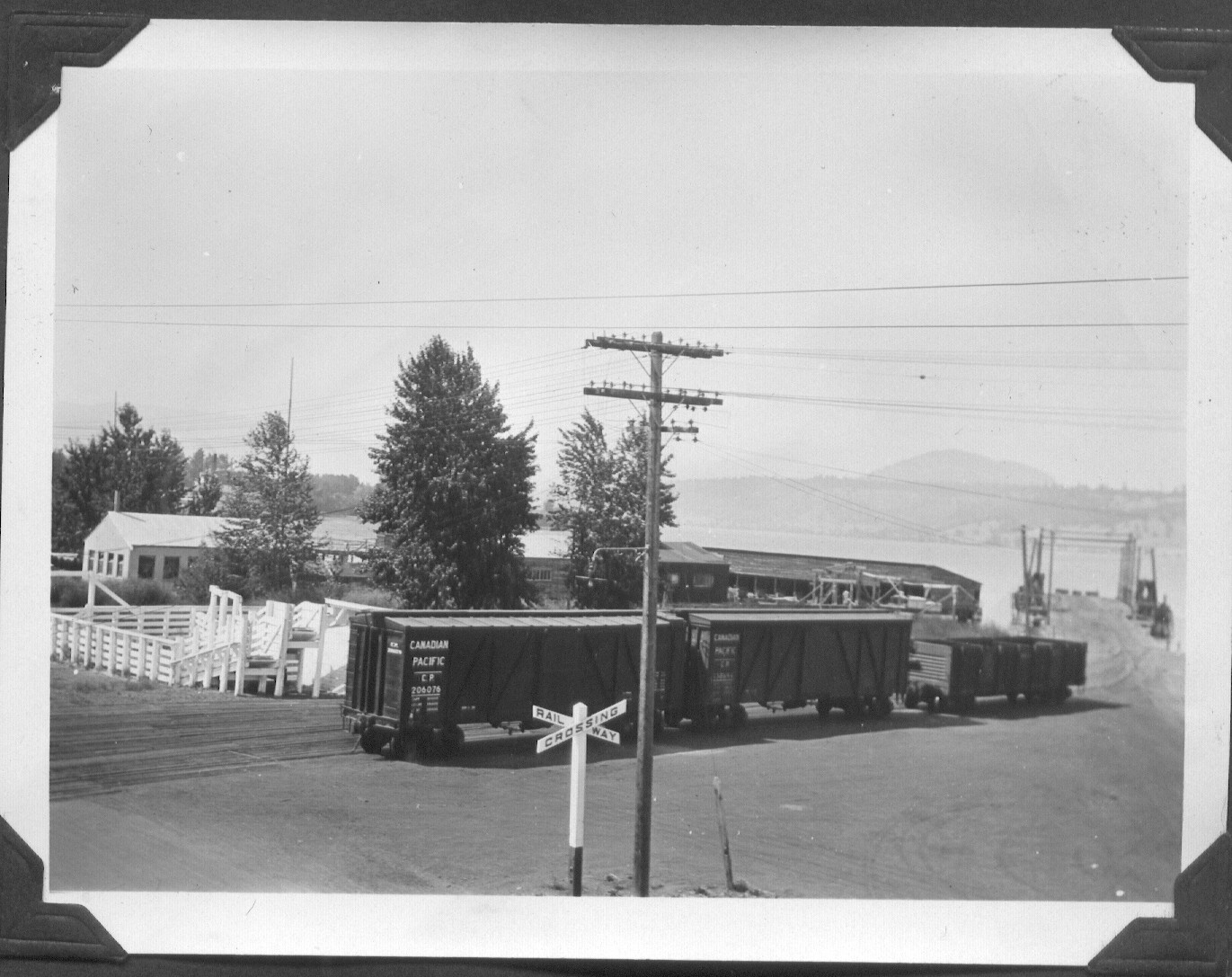
View from the Haug building of the wharf and stock pens.
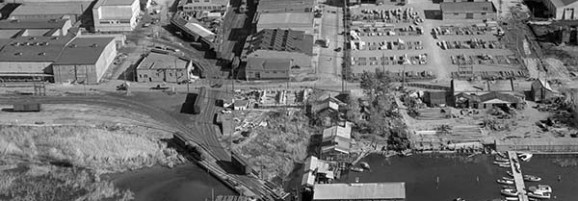
A 1948 view of the C.P. Barge slip and tracks, along with the Haug building.
View this and other air photos showing rail activity in Kelowna.
C.P. obtained running rights over the new C.N. rail line from Vernon to Kelowna.
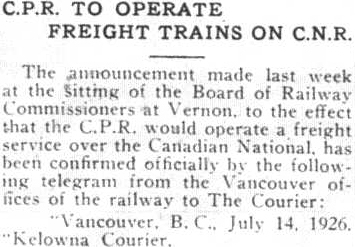
C.P. soon moved their tug and rail barge operation to Kelowna from Okanagan Landing.
Track plan from January, 1927, shows the early days of the new C.P. yard, showing the newly installed interchange track, just after the Canadian National completed the railline from Vernon to Kelowna.
After the S.S. Sicamous was removed from service, C.P. received authorization to run passenger trains from Vernon to Kelowna. First passenger train was Monday, January 7th, 1935.

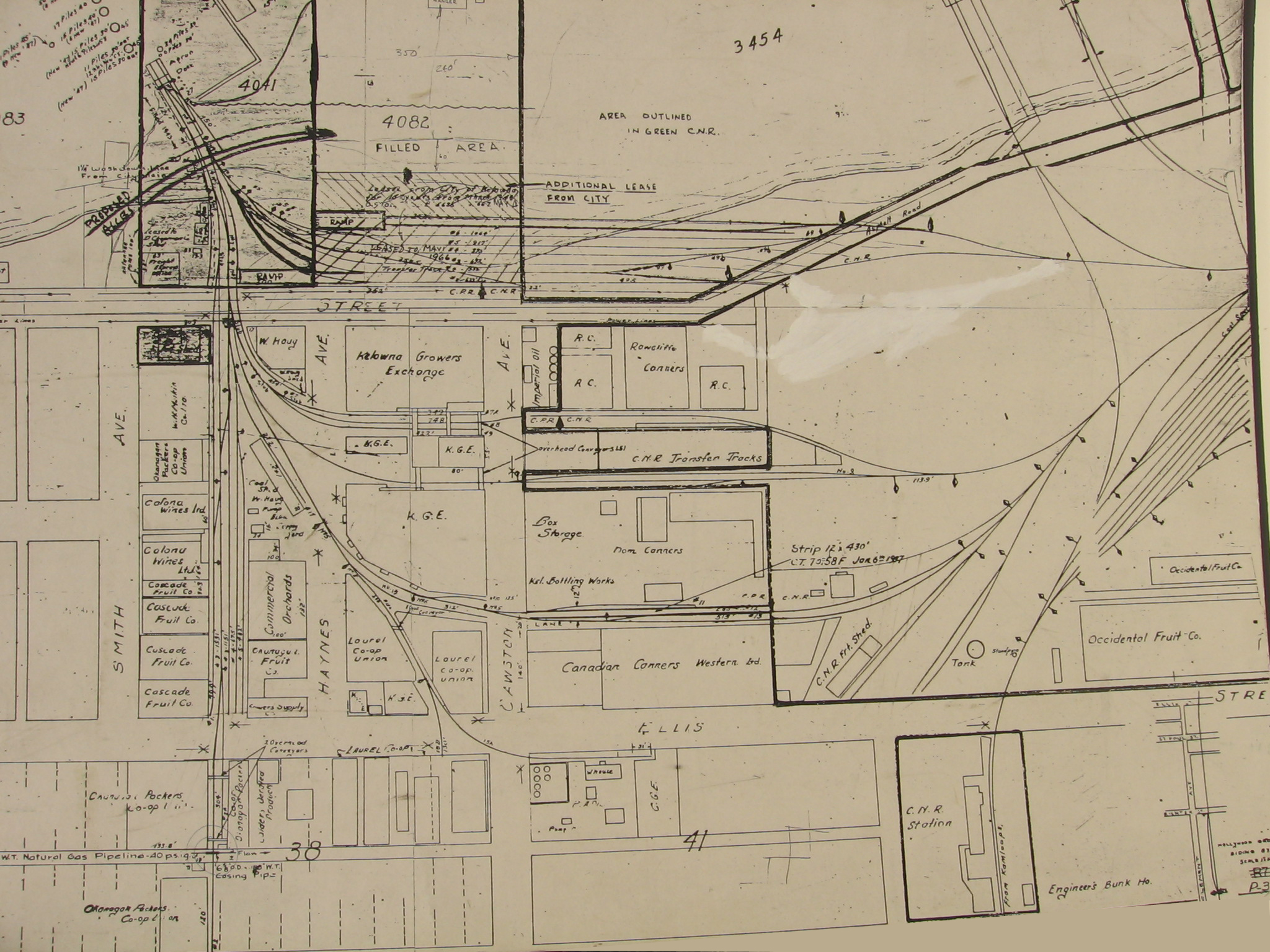
C.P. Yard, 1960’s
This 1947 view shows the packing houses and CP rail yard, to the left, which was put in after 1927. The wharf is just out of the picture on the lower left. View is to the north. The packing houses date from the 1920’s. They were all destroyed by fires in the early 1960’s.
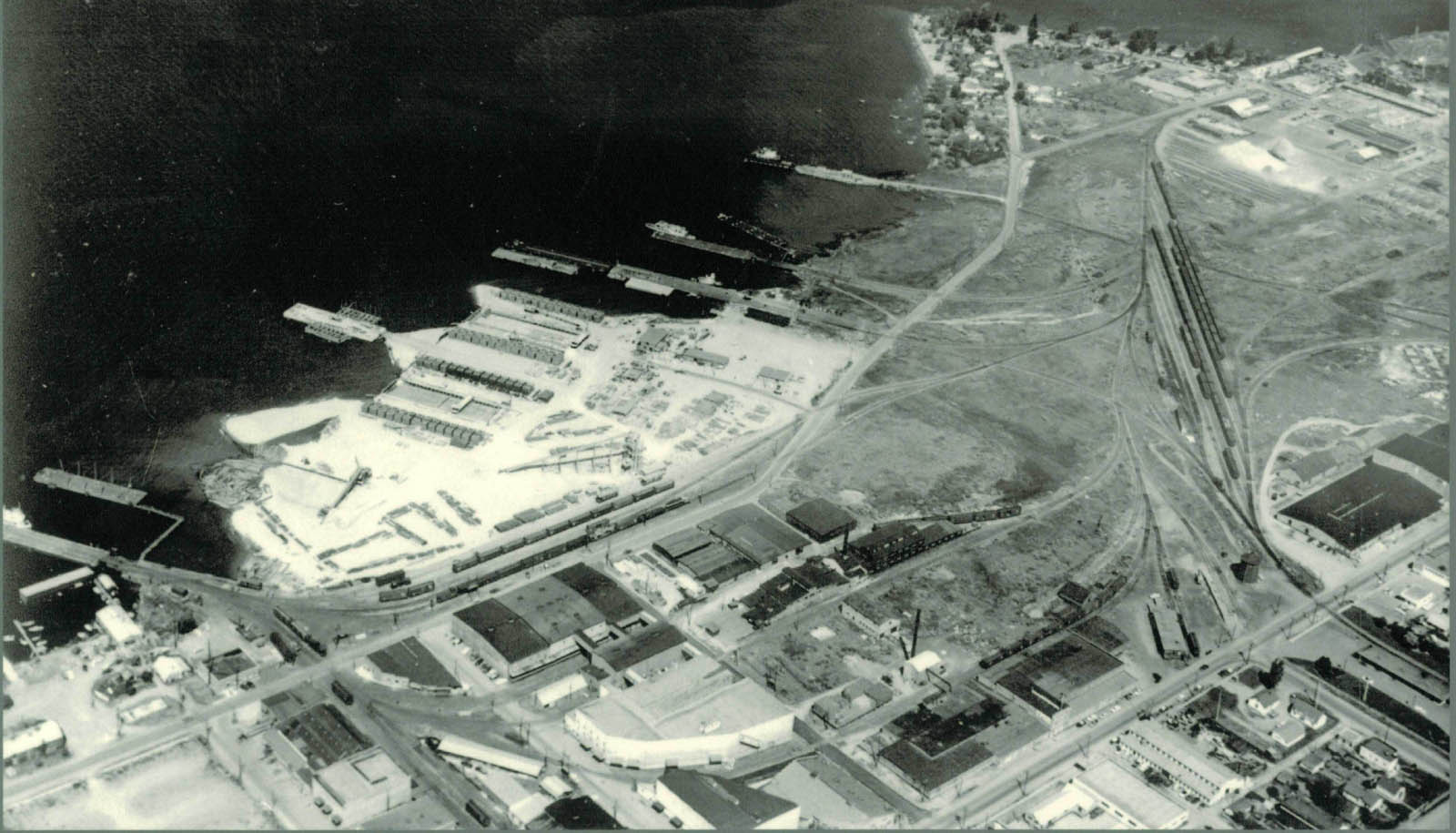
A 1957 aerial view shows the construction site for the Okanagan lake bridge which opened July 19th, 1958. The CP wharf is on the lower left. Upper wharf and docks belong to CN. Only two buildings remain today. COMPARE the above picture to the same area in 2000.
After all the C.P. waterfront tracks were removed, C.P. then shared the C.N. yard located away from the valuable waterfront land.
The end of C.P.’s railroad presence on the waterfront.

